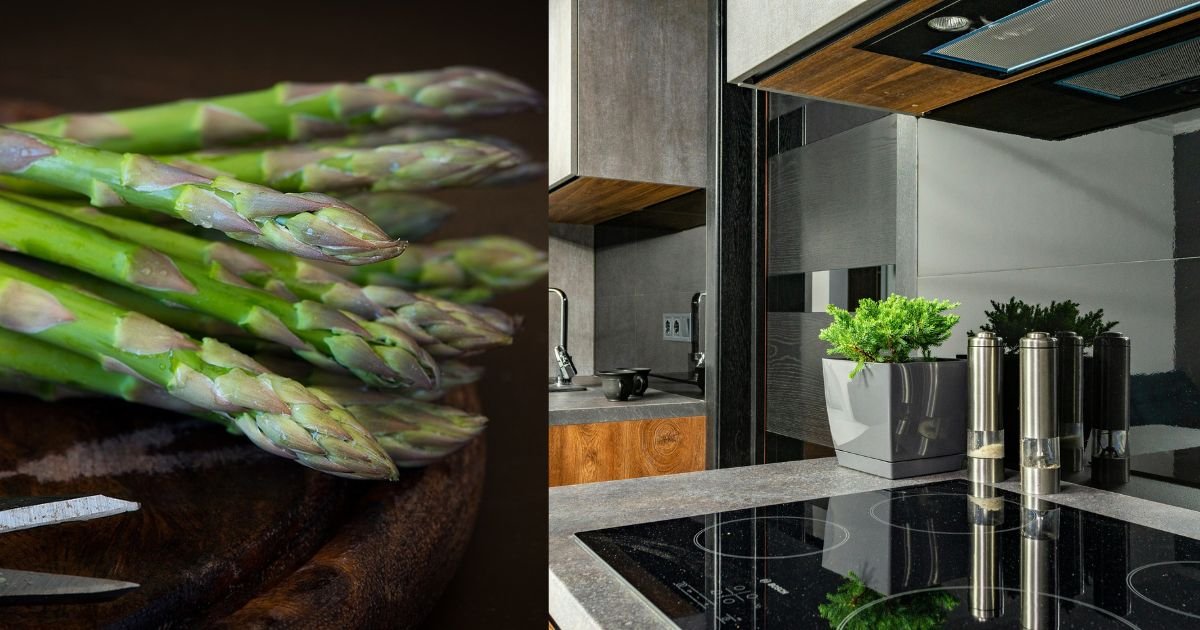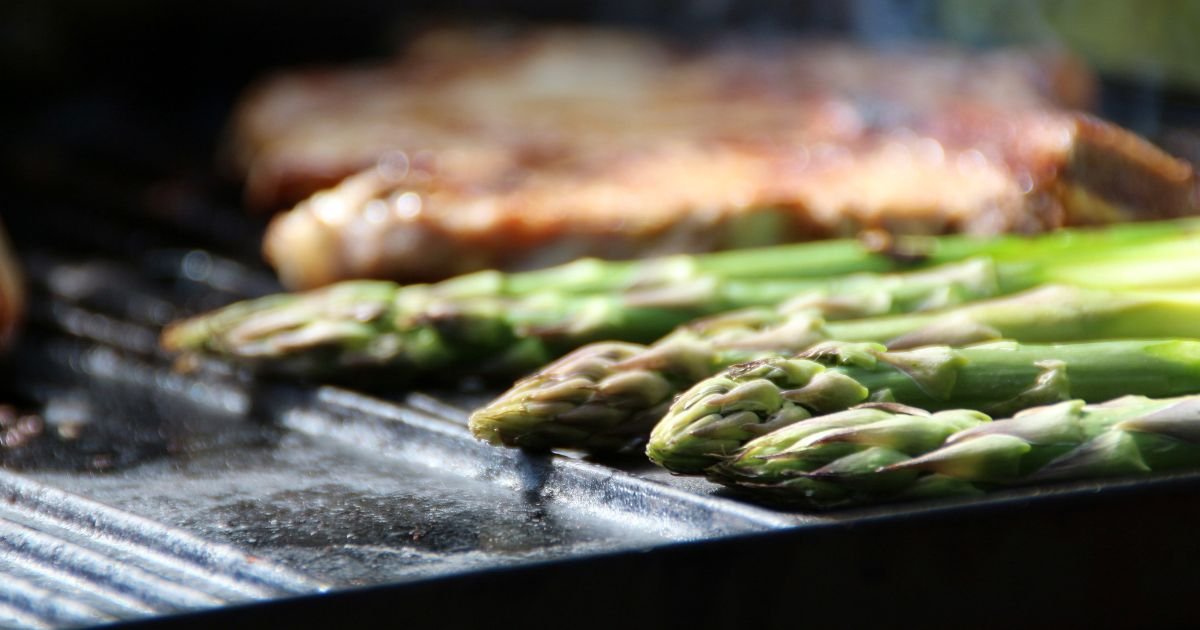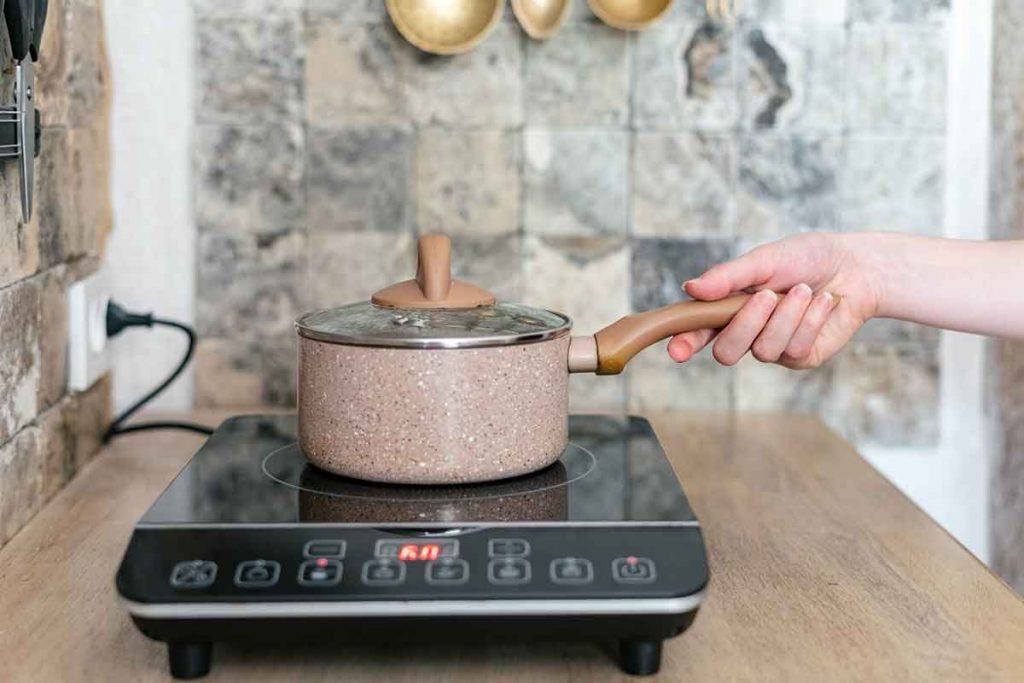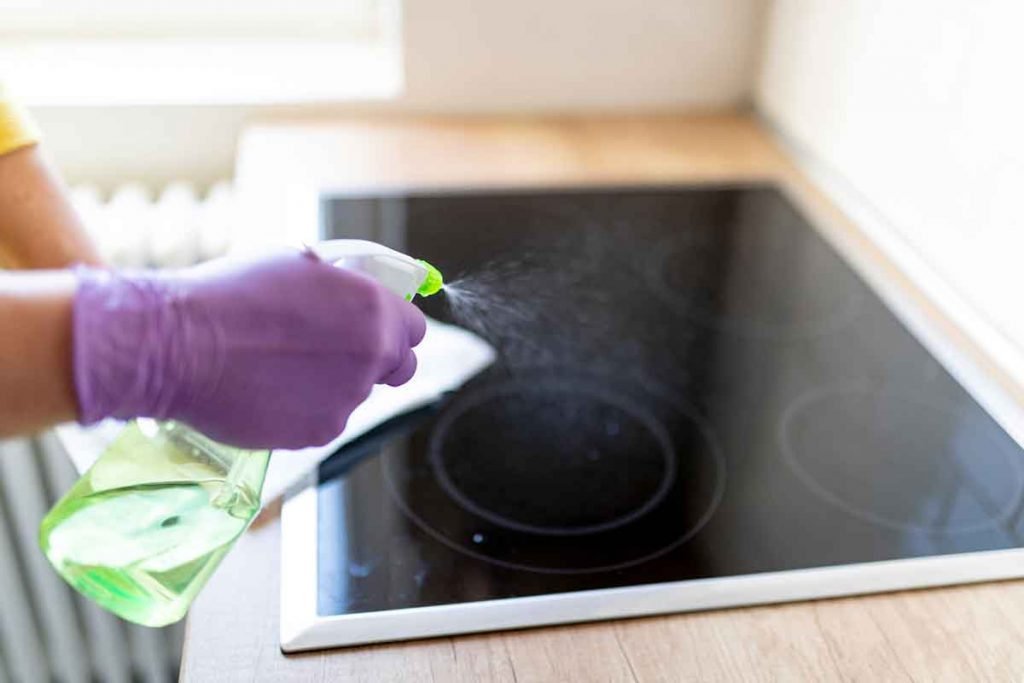
Asparagus is a nutrient-rich, slender vegetable with a spear-like shape with compact and tightly closed tips. Though most asparagus varieties have a vibrant green color, you can find others that are white or purple, depending on the growing process used. Regardless of the color, this vegetable is high in potassium fiber and is a good source of antioxidants.
When cooking asparagus, it is important to do it just right; overcooking it will result in a bitter taste, and just like other raw vegetables, undercooked it may carry a small risk of bacterial contamination. You can use various cooking methods, such as steaming, grilling, and roasting with your induction cooktop. Each method brings out unique natural flavor and texture.
Choosing and Preparing Asparagus
If you are buying asparagus for the first time, it is important to get the right one since this will impact the quality and taste of the meal you prepare. Start by examining the color; the best spear-vegetable is the one that is rich in color. If it is dull, it means that it is not fresh.
The other feature to look for when buying asparagus is the texture; it should be firm and smooth. If it appears wilted or limb, you should avoid it. To make it easier to cook and ensure that all the vegetables cook evenly, get asparagus that is uniform in length and thickness and use a quality electric cooktop.
Cut off the woody part at the bottom when preparing this vegetable since it is tough and inedible. If you’re unsure where to cut, hold the bottom firmly and gently bend the top; it will naturally snap. Next, peel away the green outer layer, which you can do using a peeler or a knife.
Trimming the ends before cooking is also important to help ensure the vegetables cook evenly. Once prepared, the asparagus will be ready for any cooking method you prefer.
Different Methods of Cooking Asparagus
What is your favorite way to cook asparagus? It can be difficult to choose just one method as you can prepare this vegetable using various techniques to get different tastes and textures. The textures and unique flavors make this spear vegetable ideal as a main ingredient for salad toppings and a side dish.
Whether you prefer the crisp and smoky flavor of grilling, the tender bite of steamed asparagus, or caramelized notes that come from grilling, there is a cooking method that suits every palette.
The best part about cooking this vegetable is that all these methods are simple yet rewarding, especially if you have a quality cooktop. Each of these approaches enhances the natural flavor, which helps make this vegetable a nutritious addition to any meal.
-
Grilling Asparagus
For those trying to grill these spear-shaped vegetables for the first time, you’re in for a treat—this cooking method results in tender and lightly charred vegetables. The grilling process is simple yet brings out a deep and rich flavor while keeping the stalks crisp-tender.
Steps
- Snap off the woody ends
- Lightly toss the trimmed spears using olive oil, salt, and pepper.
- Preheat a grill to medium before placing the asparagus for about 6 minutes.
- You will know the vegetable is ready when tender and lightly charred.
- Once done, serve it on its own as a simple dish or a side dish.
A tip to use when grilling is to grill lemon halves along the veggies. Then, serve the vegetables with a generous squeeze of the juice from the charred lemons.
-
Steamed Asparagus

The great thing about steaming asparagus is that it brings out its pure and delicate flavor. It also helps preserve the vegetable’s vibrant color and its natural nutrients. Steaming this spear-like vegetable will result in tender, juicy stalks with a slight crush. This cooking method is ideal if you need a simple and healthy side.
Steps
- Get a saucepan and add to it 1-inch of water
- Set a collapsible steamer inside and bring it to a boil
- Lay the vegetable in the steamer, cover it, and let it steam for 4-5 minutes
- Get a serving dish and pre-eat it, then transfer the vegetable to it
- Use salt and pepper for seasoning
You can choose to garnish it with lemon and serve it immediately. This dish is best enjoyed right from the induction cooktop when still hot. If you want to go the extra mile to enhance the flavor, finish the asparagus with the grated zest of a small lemon, unsalted butter, and parsley leaves.
-
Roasted Asparagus

Roasting asparagus brings out a flavorful experience. This cooking method intensifies the vegetable’s natural sweetness and adds a touch of caramelization, which creates a rich, savory taste with crispy tips and tender stalks. Roasting will help create a delicious meal on its own or as a spring side.
Steps
- Preheat the oven to 400o F degrees
- Toss the spears into olive oil, salt, and pepper, and spread them on a single layer of parchment-lining baking sheet
- Bake for 12 minutes, as this will leave the asparagus lightly crisp and tender
When roasting these vegetables, leaving about an inch of space between them is best. This will help ensure they crisp up and not steam in the oven. Squeeze in lemon or chop them into small pieces and toss them in pasta, salads, or eggs.
Seasoning Option for Asparagus
Whether you are a professional chef or simply aiming to make an impressive meal at home, season the asparagus correctly to bring out the best flavors. It is also important to note that this spear vegetable has a delicate early taste that pairs well with various seasonings, and so little can go a long way. The classic seasoning options are salt, olive oil, and ground black pepper.
If you want a bolder approach, add minced garlic, lemon zest, and balsamic vinegar before cooking. If you are considering herbs, add chives just before serving. You can also use a few leaves of lemon when steaming this vegetable to release flair in ways other seasonings cannot match.
Dill is a wonderful herb for asparagus since the two flavors combine well without overpowering each other. Tarragon is another herb used when cooking asparagus to give it a great taste.
How to Tell When Asparagus is Done

The challenge most people have when cooking asparagus for the first time is telling when it is ready. Fortunately, you can know when this vegetable is cooked; it should be tender enough to pierce with a fork and slightly crunchy. It should also have gentle softness on the outside while staying firm at the center.
The best way to know if this vegetable is ready is by taking a bite to the stalk; it should be juicy and not mushy. Remember to pay attention to the cooking time; if possible, use an induction cooktop with a timer to avoid guesswork. After cooking this vegetable for some time, you will develop a feeling of when the asparagus is ready.
Common Mistakes to Avoid When Cooking Asparagus
What happens when someone follows the recipe and still has land or overcooked asparagus? Chances are that they are making some of these mistakes.
-
Stalk Size
You might be using too small or too big stalks, which can be stringy or tough. Aim to get the medium size as this will give a good size for tenderness.
-
Taking Off Too Much
For those new at making these spear vegetables, the bend and snap technique to remove the woody part might not be the best. They will likely take off only the woody part without the right technique. You can avoid this by cutting one and applying pressure so it breaks off naturally. Then, use this as a guide to slice through the rest of the spears.
-
Not Shocking
Shocking asparagus is important as it helps keep the color vibrant and bright and prevents overcooking. Shocking should be done immediately after blanching these spears; you should transfer them to a large bowl of ice water and swirl them around in cold water until the temperature drops. Then, remove and drain them.
Preparing Too Early
A common mistake that people make when preparing asparagus is doing the process in advance. That’s because early preparation makes the vegetable chewy.
Serving Ideas and Pairings for Asparagus
After making a delicious asparagus dish, you might wonder how to serve and pair it. Here are some of the ways you can serve this meal.
-
With Dairy Produce
Asparagus pairs well with any dairy product, like cheese or sauces containing dairy produce or cream.
-
Eggs
A great asparagus is doing it with eggs and truffles. These ingredients combine well together since they share sulphurised notes.
-
Bacon or ham
Combing it with bacon or raw ham is another way to serve asparagus to achieve a sweet and savory flavor. You can choose to make the ingredients crisp by frying them.
Conclusion: Perfectly Cooked Asparagus Every Time
Is it possible to have a perfectly cooked asparagus every time? All you need to do is master the preparation and cooking methods. This will help ensure each bite is tender and crisp, highlighting the natural sweetness of the vegetables. Whether you grill, steam, or roast, you should use a quality cooktop, avoid overcooking, and season asparagus appropriately.


